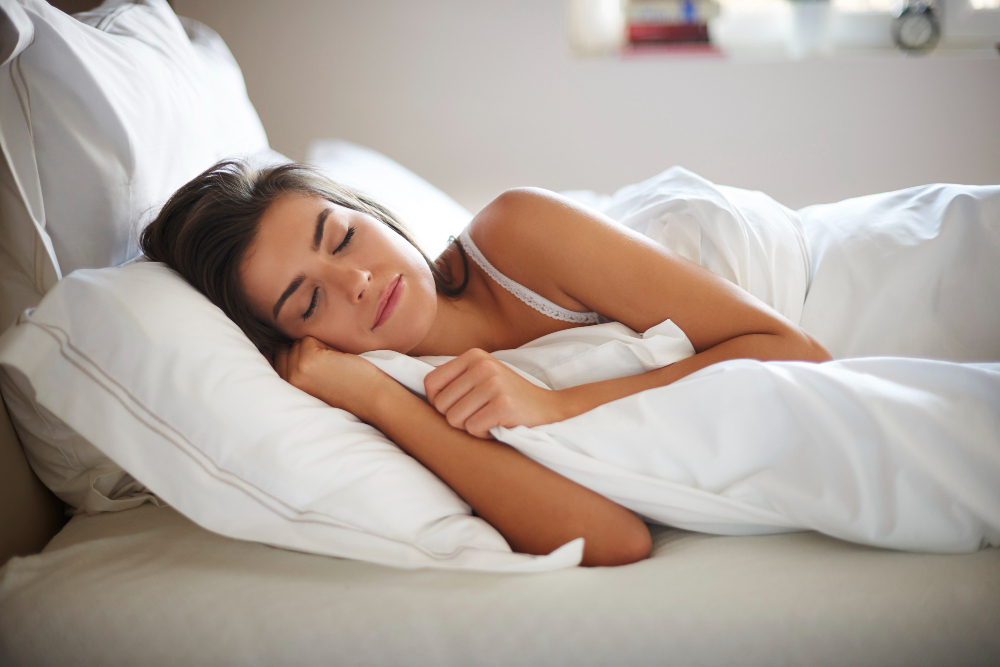We all are aware of the significance of a good night’s sleep for our overall well-being. After all, proper sleep helps in revitalizing our body while sharpening our mind. This enables us to wake up feeling energised and rejuvenated. Although there are many factors leading to quality sleep, oxygen is often overlooked when it comes to enhancing your sleep quality.
In this blog, we’ll delve into why oxygen is important to good sleep and explore how CPAP machines can help in improving your sleep. Furthermore, we’ll discuss how to keep your CPAP machine accessories sanitised and clean with the help of Lumin CPAP Cleaner and Sanitiser for a better, hygienic sleep experience.
Importance of Oxygen To Improve Sleep Quality
Oxygen is important for maintaining proper body function. Afterall, it plays a vital role in improving the respiratory system, which provides the necessary supply of oxygen to organs and tissues. When sleeping, our body undergoes various restorative processes for which oxygen is essential to support regular body functions. A sufficient oxygen supply while sleeping can regulate your blood pressure. It even promotes healthy brain activity while aiding tissue growth and repair.
Connection Between Oxygen and Sleep Quality
Disrupted oxygen levels in the body can dramatically impact our sleep quality. A common sleep disorder called obstructive sleep apnea (OSA) occurs due to partial or total airway obstruction while a person is asleep. Because of the obstruction, oxygen levels may drop, disturbing breathing and causing nighttime awakenings. As a result, people with OSA frequently have trouble sleeping, often feel tired during the day, and experience other connected health problems.
CPAP Machines and Their Role in Enhancing Sleep
Continuous positive airway pressure (CPAP) machines have revolutionized the treatment of sleep apnea. CPAP therapy requires the use of a mask worn over the mouth or nose. This mask delivers a constant stream of pressurized air while keeping the airway open. This ensures an adequate oxygen supply during sleep. With a constant flow of oxygen, CPAP machines can alleviate sleep apnea symptoms while promoting restful and uninterrupted sleep.
After a diagnosis of sleep apnea, a specialist will recommend CPAP therapy to a patient. The device maintains a constant positive pressure that stops the airway from collapsing and enables uninterrupted breathing all night long. The body receives the required amount of oxygen thanks to this continuous oxygen flow. It even lessens the breathing interruptions associated with sleep apnea.
Importance of CPAP Equipment Sanitisation
Inadequate CPAP equipment cleaning might result in skin rashes, respiratory infections, and other health issues. The regular cleaning of CPAP masks, tubes, and humidifier chambers can avoid the growth of germs, mould, and other dangerous pathogens. So, it is vital to sanitise CPAP equipment to maximise the benefits of CPAP therapy.
The Lumin CPAP sanitiser is useful in this situation. This device can successfully sanitises CPAP masks, humidifier chambers, and other attachments using UVC radiation. Since 99.9% of germs, viruses, and other pathogens are destroyed by UVC light, your sleep therapy will take place in a clean, sanitary environment.
The Lumin CPAP Sanitiser: Ensuring Hygiene and Convenience
The Lumin CPAP Sanitiser makes use of powerful UVC light to sanitise CPAP accessories without the need for harsh chemicals. A wide variety of microorganisms, including bacteria, viruses, and mould are destroyed by UVC. So, with the use of Lumin, you can eliminate the risk of infections related to unclean CPAP equipment.
The best part is that Lumin sanitiser is easy to use. It offers a hassle-free operation, thanks to its straightforward one-touch user interface. It usually just takes five minutes to thoroughly clean your CPAP mask, tubing, and humidifier chamber. The Lumin does not require the use of water, therefore there is no need for disassembly or waiting for components to dry.
Conclusion
Proper oxygen levels are crucial to maintain the body’s several functions while we sleep. In case you suffer from sleep apnea or other breathing-related sleep issues, CPAP therapy can significantly improve the quality of your sleep. This machine provides a constant flow of oxygen to the user’s body while they are asleep. However, to maintain proper hygiene, it’s essential to regularly clean your CPAP equipment. For cleaning and sanitisation, the Lumin CPAP sanitiser is a practical and effective solution. Find more about this CPAP cleaning machine on the official website.



